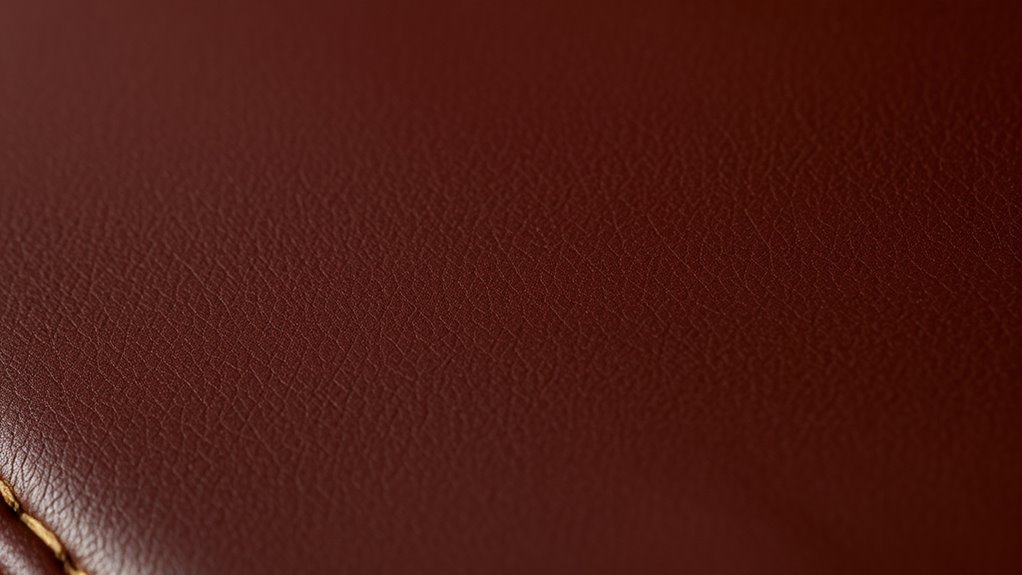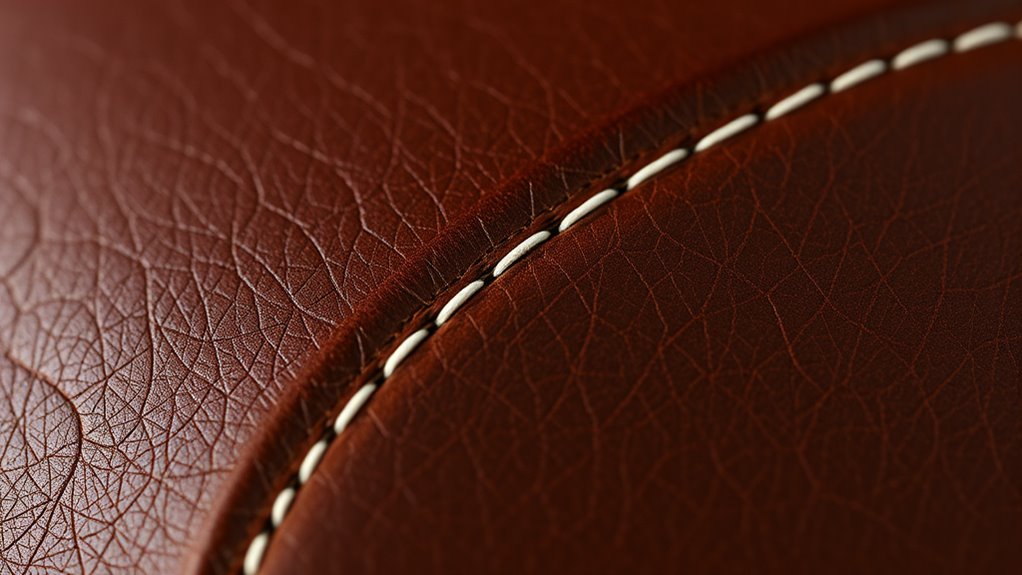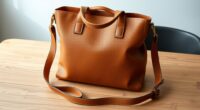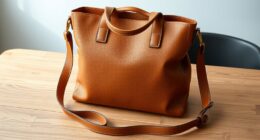In high-quality leather goods, the choice between machine and hand stitching affects both durability and craftsmanship. Machine stitching offers speed, uniformity, and strength for heavy-use items, while hand sewing adds a refined touch, flexibility, and artisanal detail, ideal for luxury products. Mastering both techniques allows you to balance durability with aesthetic appeal. If you’re curious about how these methods enhance leather’s beauty and longevity, you’ll discover more insights as you explore further.
Key Takeaways
- Hand sewing offers superior craftsmanship, flexibility, and aesthetic appeal, ideal for luxury leather products and bespoke pieces.
- Machine stitching provides consistency, speed, and durability, suitable for large-scale production of heavy-duty leather goods.
- Combining both methods enhances product quality by balancing artisanal detail with manufacturing efficiency.
- Thread selection, such as waxed linen or nylon, impacts the strength, flexibility, and overall durability of the stitches.
- Mastery of various stitching techniques ensures optimal product longevity, aesthetic finesse, and craftsmanship in high-end leather goods.

Stitching plays a crucial role in both the durability and aesthetic appeal of leather goods, making it essential to understand the various techniques used. When it comes to high-quality leather products, the choice between machine stitching and hand sewing can substantially influence the final result. Machine stitching offers speed and uniformity, allowing you to produce consistent, tight stitches that are ideal for large-scale production or when precision is paramount. Modern sewing machines designed for leather can handle thick materials, ensuring the stitches are strong and durable. This method is efficient, especially when you need to complete multiple items quickly, but it sometimes lacks the artisanal touch that hand sewing provides. Additionally, the type of thread used—such as waxed linen or nylon—can significantly impact the strength and flexibility of the stitches.
Machine stitching ensures speed and consistency for durable leather goods.
On the other hand, hand sewing delivers a level of craftsmanship that machine stitching often can’t match. When you choose to sew by hand, you gain control over every stitch, allowing for nuanced detailing and a personalized finish. Hand sewing is particularly valuable for repairs, custom pieces, or high-end leather goods where the appearance of the stitches matters just as much as their strength. It requires patience and skill, but the resulting stitches tend to be more flexible and can better conform to the natural movement of the leather. Plus, hand sewing allows you to select specific types of stitches—such as saddle stitch or backstitch—that contribute both to the aesthetic and longevity of the product.
Both techniques have their place in leather craftsmanship, and understanding when to use each will help you create superior products. For instance, if you’re working on a rugged leather belt or a bag that needs to withstand heavy use, machine stitching can provide the robustness required. Conversely, for a luxury wallet or a bespoke handbag, hand sewing can elevate the piece with its fine, detailed finish. Many skilled artisans blend both methods—using machine stitching for the main seams and hand sewing for finishing touches or decorative elements—combining efficiency with craftsmanship.
Ultimately, your choice of stitching technique depends on the project’s purpose, your skill level, and the desired aesthetic. Mastering both machine stitching and hand sewing will give you versatile tools to produce leather goods that are not only strong and durable but also beautifully crafted. By understanding the strengths and limitations of each method, you can guarantee your leather creations stand the test of time while showcasing quality craftsmanship. Developing an expertise in stitching techniques enables artisans to achieve both durability and aesthetic finesse in their leather goods.
Frequently Asked Questions
How Does Stitching Affect Leather Durability Over Time?
Stitching notably impacts leather durability over time. When you maintain proper thread tension and consistent stitch length, the seams stay strong and resistant to wear. Tight tension prevents gaps, while correct stitch length ensures even distribution of stress. If either is off, the leather can weaken or tear sooner. So, you should always focus on precise stitching to extend your leather item’s lifespan and keep it looking pristine.
What Tools Are Essential for High-Quality Leather Stitching?
Did you know that choosing the right tools can increase stitching durability by up to 30%? To achieve high-quality leather stitching, you need essential tools like a leather needle, awl, and thread scissors. Focus on thread selection, opting for strong, flexible threads like waxed polyester or nylon. Additionally, mastering different stitching patterns, such as saddle or backstitch, guarantees your work is both durable and visually appealing.
Can Stitching Techniques Be Customized for Different Leather Types?
Yes, you can customize stitching techniques for different leather types. You should use leather-specific techniques and create custom stitch patterns that suit each leather’s unique properties. For softer leathers, you might opt for delicate, closely spaced stitches, while tougher leathers benefit from wider, reinforced stitches. Adapting your stitching approach guarantees durability and aesthetic appeal, allowing you to tailor your craftsmanship to various leather textures and finishes effectively.
How Does Stitching Influence the Aesthetic Appeal of Leather Products?
Stitching greatly influences the aesthetic appeal of leather products by adding embellishment techniques and creating striking visual effects. You can enhance your item’s look with color contrast stitching, which highlights craftsmanship and adds a pop of color. Thoughtful stitching choices, like decorative or intricate patterns, can elevate the overall design, making your leather goods stand out. Your stitching becomes a key element that combines durability with style, reflecting quality and attention to detail.
Are There Eco-Friendly Stitching Options Available for Leather Goods?
You’ll be pleased to know eco-friendly stitching options exist. Instead of traditional threads, you can opt for vegan alternatives and biodegradable threads, which gently support sustainability. These materials reduce environmental impact while maintaining durability and aesthetic appeal. Choosing such options shows your commitment to eco-conscious practices, giving your leather goods a refined look with a conscience. It’s a thoughtful way to blend quality craftsmanship with environmental responsibility effortlessly.
Conclusion
As you explore the world of leather craftsmanship, you’ll discover that stitching techniques are the heartbeat of high-quality goods. Mastering these methods transforms simple leather into timeless masterpieces, elevating your work to legendary status. Every stitch you make weaves durability with beauty, creating an unbreakable bond between artisan and product. So, embrace these techniques with passion—because in the domain of leather, your skill can turn ordinary into something truly extraordinary, rivaling the grandeur of the universe itself.








